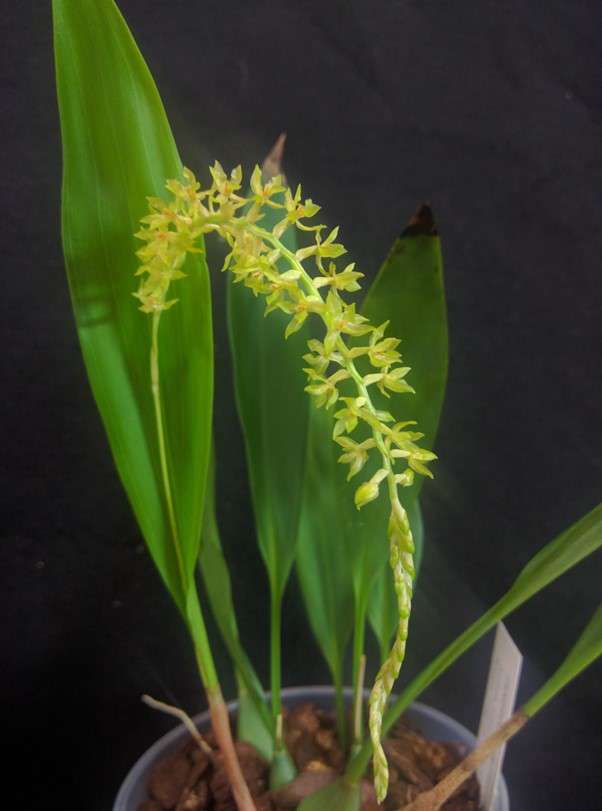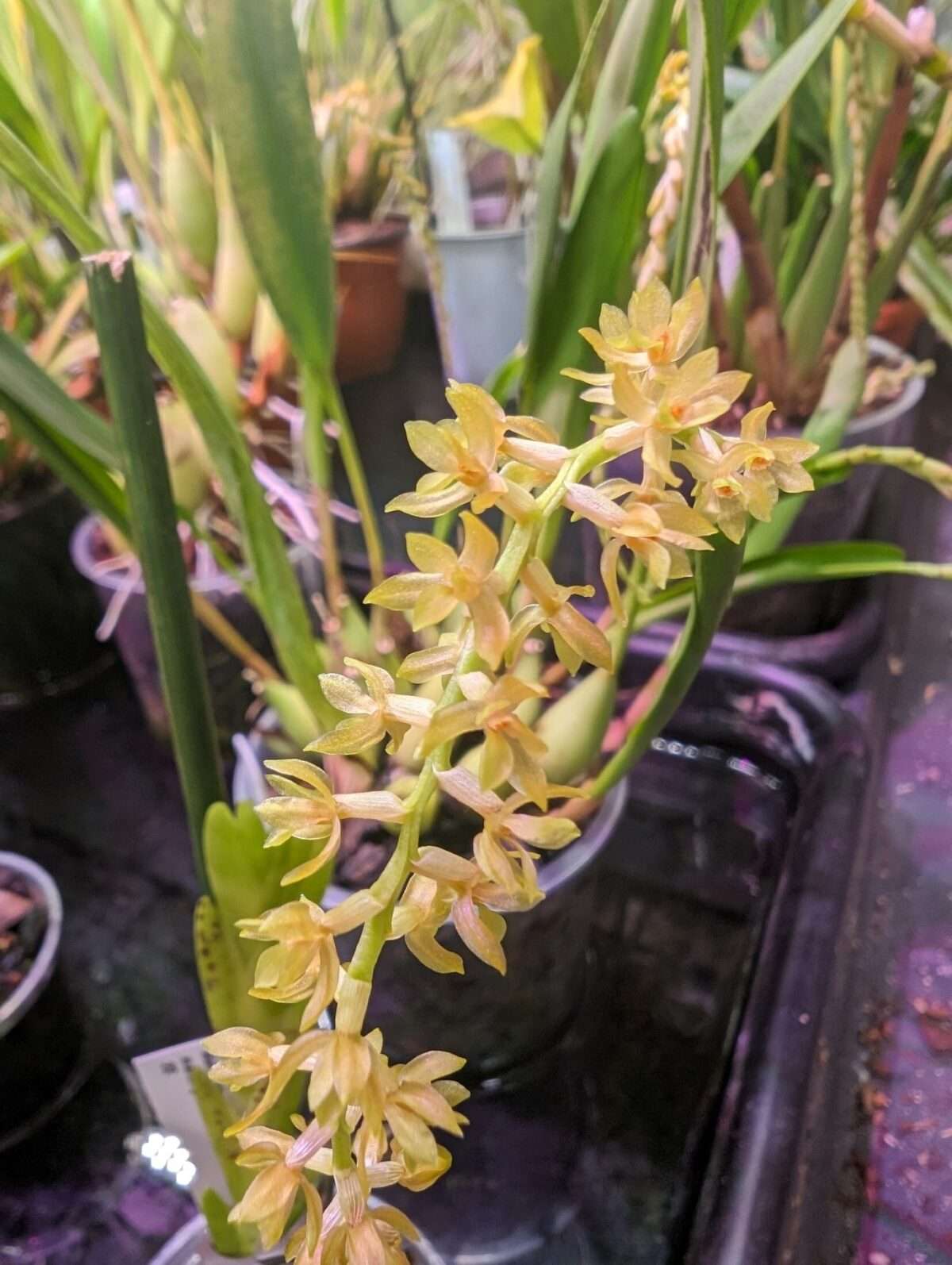Dendrochilum propinquum belongs to section Platyclinis. I assume the sections of Dendrochilum have also been sunk in to Coelogyne There appears to be some confusion over whether this species is in fact D. convellariaeforme, but I consider them separate species as my two plants are quite different. I wonder if this close relationship with other members of its section is at the root of the name ‘propinquum’ (meaning ‘common’ or frequently found). I am growing both species (as well as a plant labelled as D. propinquum ‘Mindanao’ which appears quite different – there is a separate article on that). It comes from the island of Luzon in the Philippines where it grows epiphytically on trees growing on the slopes of volcanoes.
The pseudobulbs are the size and shape of a quails egg, topped by a single fairly broad stiff leaf and are clustered on a short rhizome. New growths are covered by pinkish coloured sheaths (properly called cataphylls) that wither once the new pseudobulb is completed and need to be pulled away gently to keep plants tidy and remove hiding places for pests. Inflorescences are produced from the new growth while still young and grow to slightly shorter than the leaves. The flowers are small but numerous and are arranged neatly in two spiralling ranks down the rachis. This particular plant has greenish yellow flowers, but many specimens have more tawny or even pinkish coloured flowers. They are scented but I do not find the scent pleasant.
As the plant grows, it will produce more new shoots at a time and more flowers will be the result, and a fully grown specimen in full bloom is quite an impressive sight.
Potting mix is usually fine bark chips and a fully adult plant will fit comfortably in a 9cm pot. This species does not like to dry out and it should be watered before it approaches dryness. It enjoys intermediate to warm temperatures though I understand from other growers it is quite happy grown cooler too.


